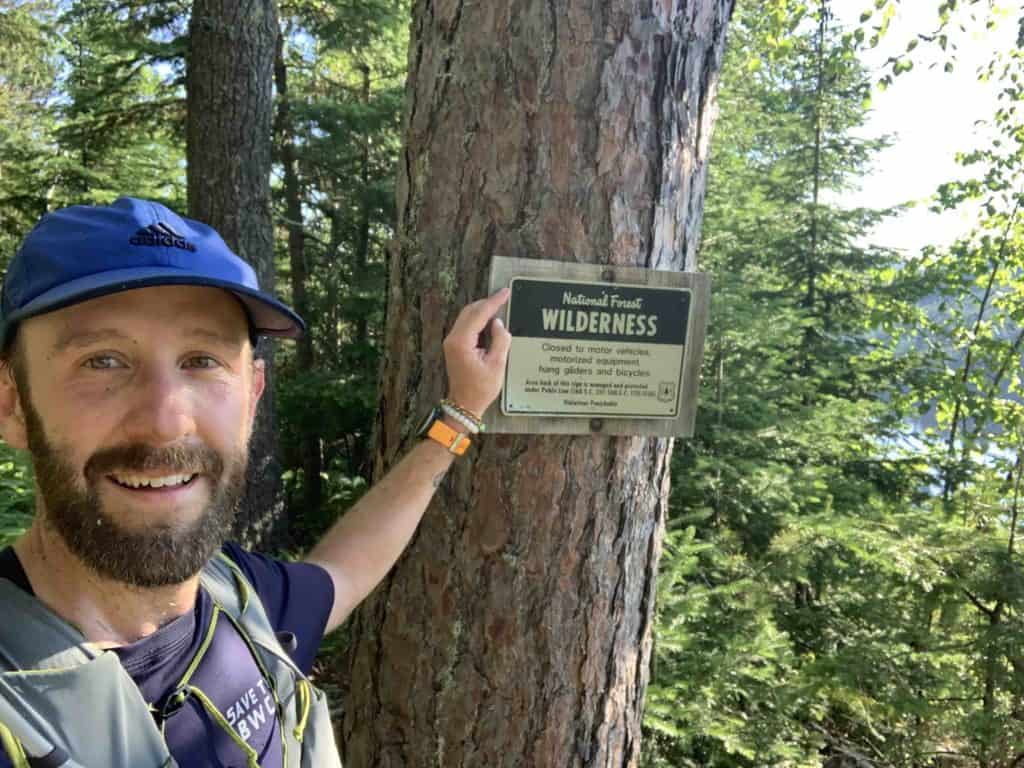
Earlier this summer, Save the Boundary Waters Campaign Government Affairs Director Alex Falconer commenced a new project to help inspire people to protect the Boundary Waters Canoe Area Wilderness. He set out to run across the wilderness — which is usually traversed by the traditional means of canoe and portage.
Falconer completed the Border Route Trail in late June, running through the northeastern section of the wilderness. The 56-mile trail tested his stamina and footwork — rocky, rooted, and rolling up and down, Falconer reported tripping and falling five times, including once when he broke a toe.
“There was maybe 3 miles the entire journey where it was flat, level and relatively free of rocks or roots,” Falconer reported. “Everything else was either: rocky, covered in tree roots, blocked by fallen trees, straight up a hillside, straight down a hill side, climbing up 3 foot rocks, a combo of the above or all of the above!”
Running as near the solstice as possible, and starting the expedition in dawn hours at 4 a.m., Falconer sought to maximize the daylight. He traveled the more popular first sections, which are better defined and easier to follow in the dark.
The advocate and father of three plans to run the second leg of the journey in October, crossing the 40-mile Kekekabic Hiking Trail from the end of the Gunflint Trail to Ely.
“There is a specific humbling peace and sense of tranquility that comes from feeling so small in the presence of the vast wilderness and yet feeling so connected to something larger than life,” he wrote.
Next summer, his plan is to do both segments of the trip in one push, which he is calling the “Boundary Waters Traverse.”
The whole effort is designed to highlight the threat of copper-nickel mining to the Boundary Waters, and engage the large trail-running community in the effort to protect the wilderness.
More information:

